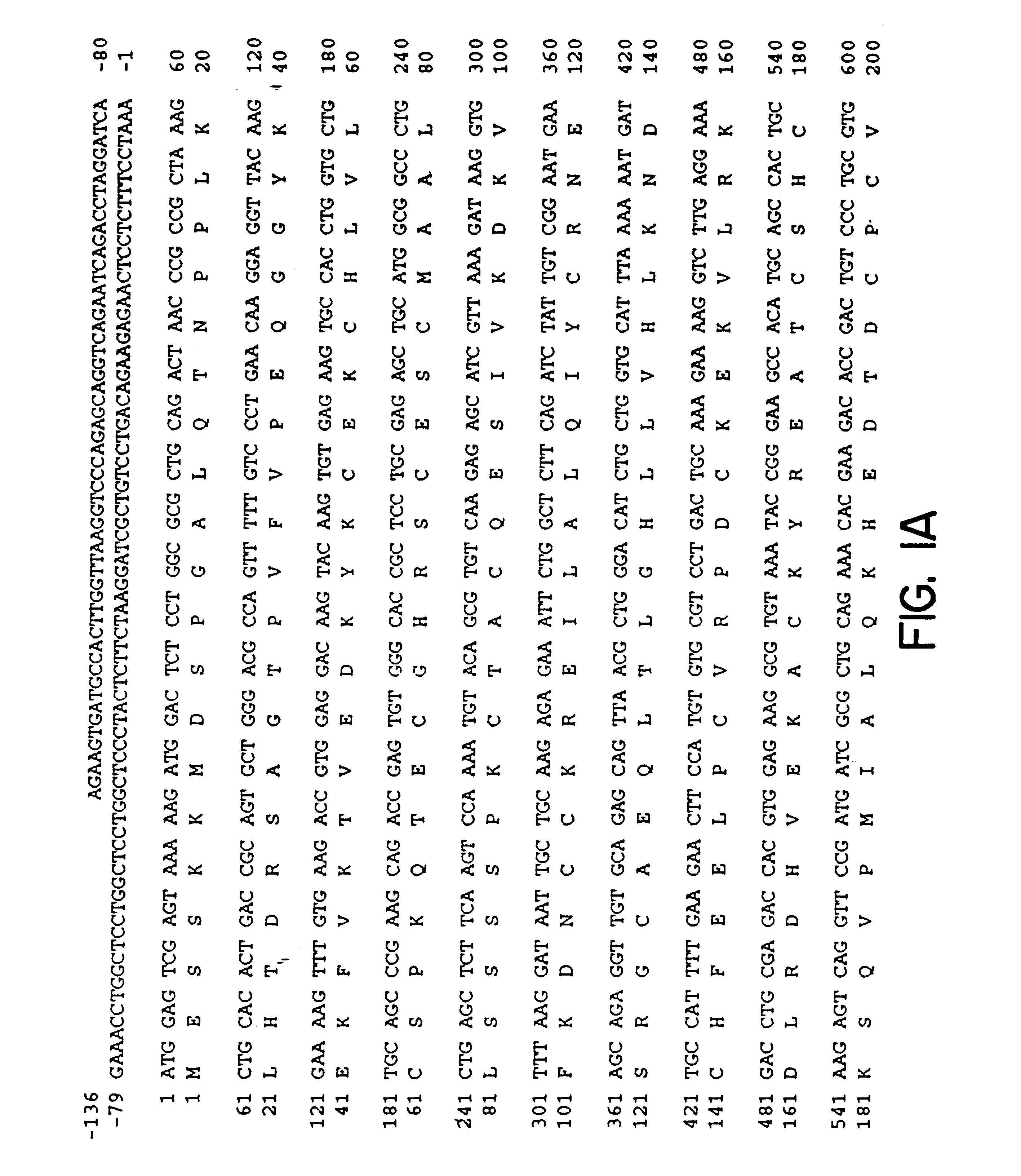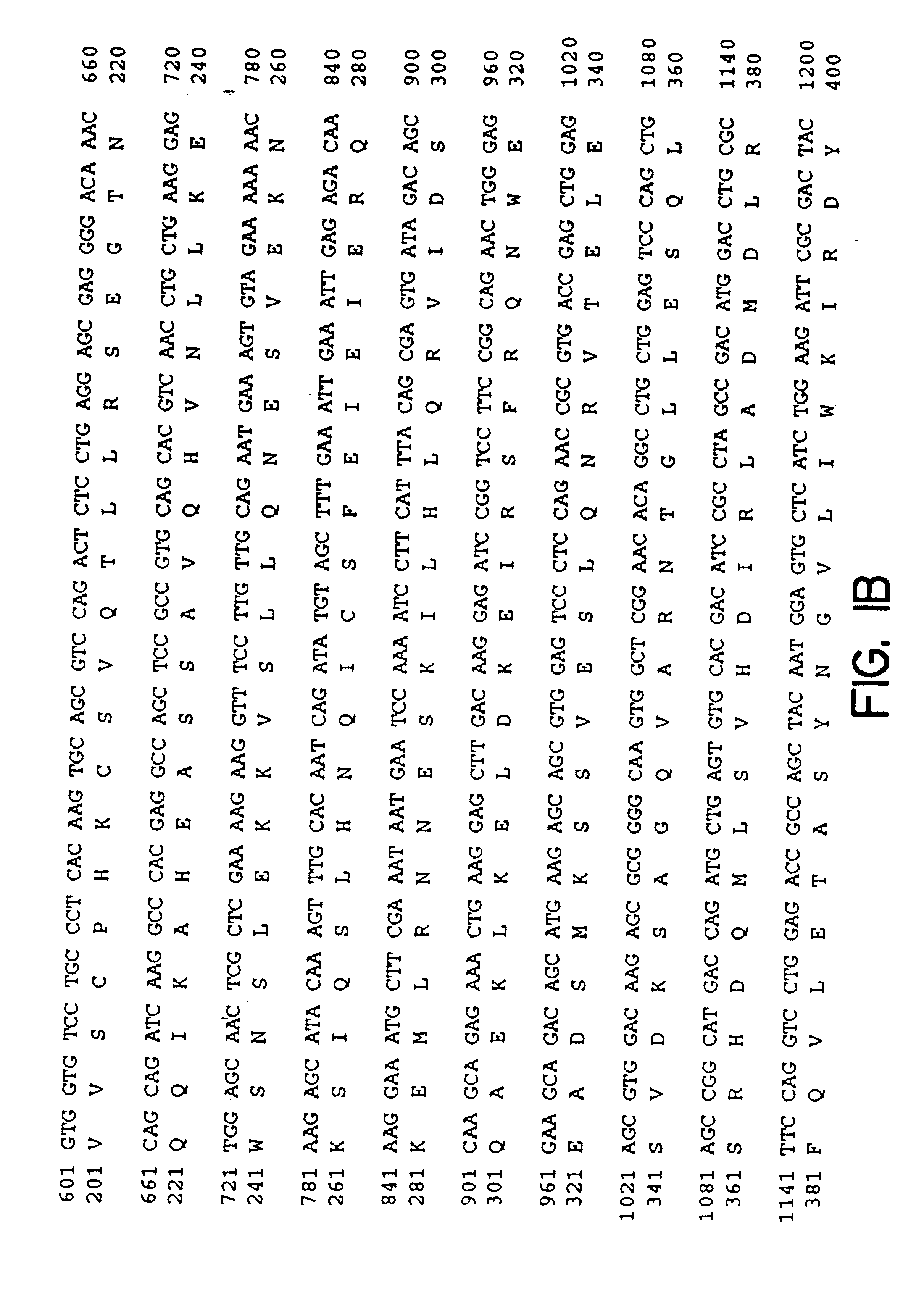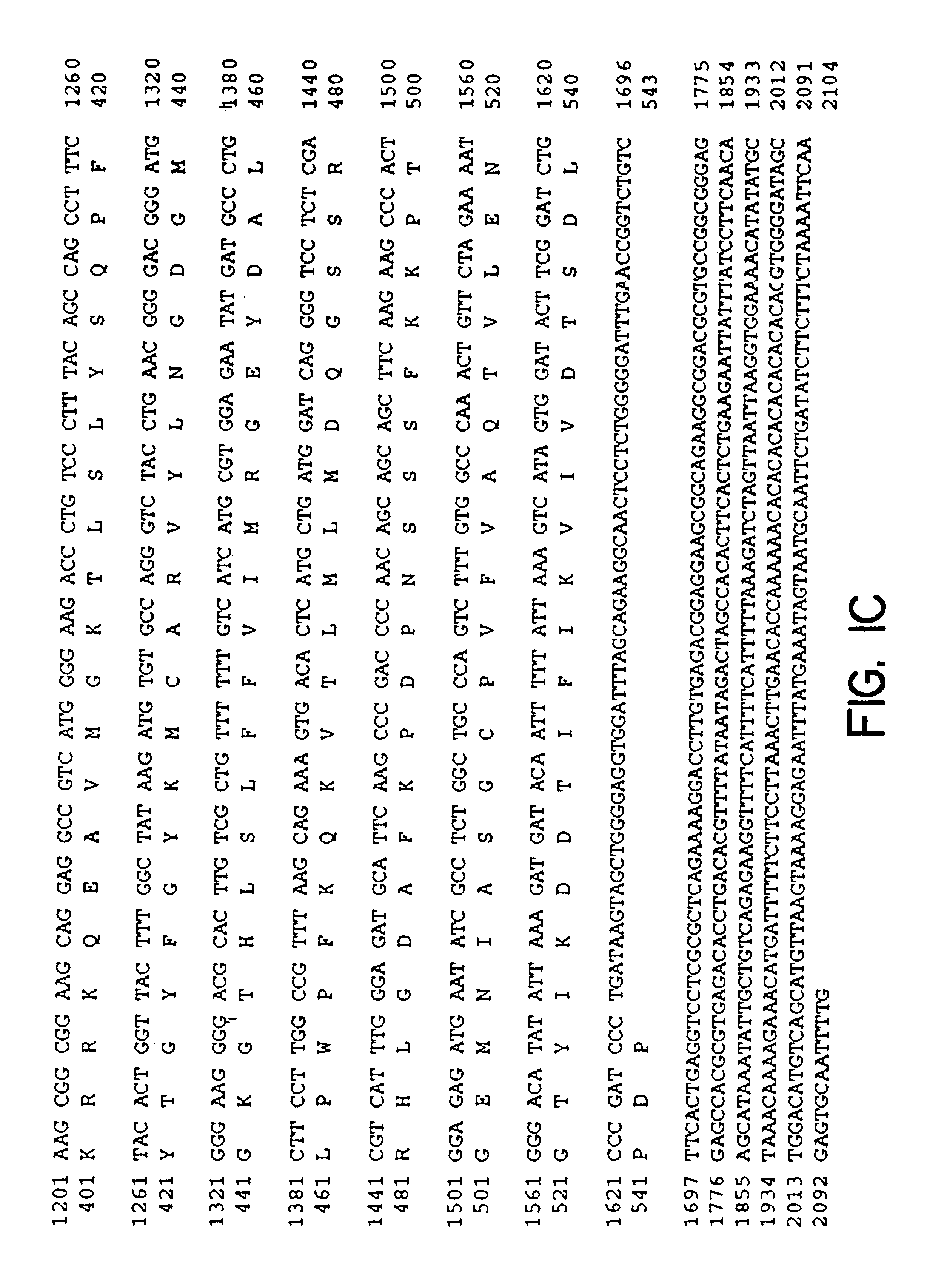Nucleic acid encoding CD40 associated proteins
a technology of cd40 and associated proteins, applied in the field of immunological responses, can solve the problems of increased or decreased apoptosis in the cell, cdna sequence obtained from a cdna library may not encode the full length protein, and no clues to the cytoplasmic domain of cd40
- Summary
- Abstract
- Description
- Claims
- Application Information
AI Technical Summary
Benefits of technology
Problems solved by technology
Method used
Image
Examples
example ii
In Vitro Assays to Identify a CAP
This example describes methods for constructing fusion proteins and producing labelled proteins useful for detecting and characterizing a CAP in vitro.
A. Production of GST Fusion Proteins
GST-fusion proteins were cloned into pGEX plasmids (Pharmacia, Piscataway, N.J.) and expressed in E. coli. pBTM 116-CD40 (positions 225-269), Fas and TNF-R2 plasmids were digested with Eco RI and either Xho I or Sal I and the inserts subcloned in-frame with the upstream GST sequences in pGEX-4T-1. For GST-CD40 (positions 220-277), a Bal I fragment encoding amino acids 220-277 was excised from pCDM8-CD40 and subcloned initially into the Hinc II site of Bluescript pSKII (Stratagene, Inc.; La Jolla Calif.). The pSKII-CD40 / BalI plasmid was then cut with XhoI and EcoRI and the fragments containing CD40 sequences were each subcloned into a modified version of pGEX-2T-1 in-frame with the GST sequence. For GST-TNF-R1, the cytoplasmic domain of TNF-R1 was PCR amplified from t...
example iii
Characterization of CAP-1
This example describes the characteristics of human CAP-1.
The complete ORF of CAP-1 was obtained by combining the DNA sequence insert present in the original pACT2229 clone insert with the sequence inserts from clones pSK-7 and pSK-5' (see Example I and II for details). The complete CAP-1 ORF encodes a 543 amino-acid protein, having an estimated molecular mass of .about.62 kDa (FIG. 1 SEQ ID NO: 2). The full length sequence is based on a predicted translation initiation site that conforms in 6 of 7 positions to the Kozak consensus sequence (Kozak, J. Biol. Chem. 266:19867-19870 (1991)). Stop codons were found in all three reading-frames upstream of the longest ORF (nucleotide sequence submitted to Genbank). The absence of a polyadenylation sequence in the 3' untranslated region of the CAP-1 cDNAs (pACT2229 and pSK-7) suggests that the complete 3' end of the CAP-1 cDNA sequence remains to be determined.
A search of the CAP-1 nucleotide sequence against the ava...
PUM
| Property | Measurement | Unit |
|---|---|---|
| Immunogenicity | aaaaa | aaaaa |
| Cell growth | aaaaa | aaaaa |
Abstract
Description
Claims
Application Information
 Login to View More
Login to View More - R&D
- Intellectual Property
- Life Sciences
- Materials
- Tech Scout
- Unparalleled Data Quality
- Higher Quality Content
- 60% Fewer Hallucinations
Browse by: Latest US Patents, China's latest patents, Technical Efficacy Thesaurus, Application Domain, Technology Topic, Popular Technical Reports.
© 2025 PatSnap. All rights reserved.Legal|Privacy policy|Modern Slavery Act Transparency Statement|Sitemap|About US| Contact US: help@patsnap.com



